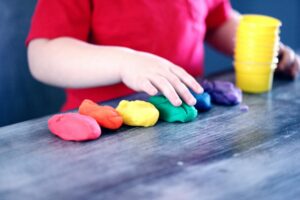Homeschooling has become an increasingly popular choice for families seeking a more personalized and flexible approach to learning. It has also become an increasingly important choice for families who have lost access to public school and who are leery of the curriculum and climate of public schools.
Top reasons families have given for choosing homeschooling in recent years include: Flexibility; dissatisfaction with public school curriculum and/or values and beliefs and of course lack of access for kids in states that do not accept religious or moral exemptions.
As you embark on this journey, you’ll encounter various methods of homeschooling. It can be overwhelming to decide which is the best fit. A first step would be to determine which style you’ll want to use. For many families, a “cobbled” approach with various styles works best. Often times a style that worked one year (or during the elementary years) doesn’t work the next–or doesn’t work as well for some children as others. Let’s explore the more common homeschool methods to get a sense of the various styles:
1. Traditional Homeschooling

Traditional homeschooling is modeled after the structure and regimen of public or private schools. Parents typically follow a set curriculum that includes textbooks, worksheets, and tests. This style is ideal for families who prefer a structured environment and want their children to follow a standard educational path, similar to their peers in conventional schools. On the other hand, it’s becoming less appealing to parents who have chosen to remove their children from the public school system because the structure, regimen, and curriculum are not a match for their children or household.
Pros:
- Familiar structure for parents and children
- Easy to track progress with clear benchmarks
- Often easiest style for meeting state requirements with minimal adjustment
- Religious families can find online programs that cater to their values
Cons:
- May lack flexibility
- Can feel restrictive or too rigid for some learners
Books:
A Quick Guide To Start Homeschooling: From Traditional School to Homeschool Workbook
The Homeschooling Father, How and Why I got started.: Traditional Schooling to Online Learning until Homeschooling
2. Charlotte Mason

The Charlotte Mason method emphasizes literature, nature, and the arts, focusing on cultivating a love for learning rather than rote memorization. Named after the British educator Charlotte Mason, this style encourages short, focused lessons, nature walks, and the use of “living books” that bring subjects to life.
Pros:
- Nurtures a child’s natural curiosity
- Emphasizes the beauty of learning through real-world experiences
- Encourages a love for literature and the arts
- Though not intrinsically Christian, it’s easy to find Charlotte Mason curriculums with a Christian focus
- Requires parents to be hands-on and creative
- May not cover all traditional academic subjects in depth
Books:
Home Education
In Vital Harmony: Charlotte Mason and the Natural Laws of Education
3. Montessori Homeschooling

Montessori homeschooling is based on the educational philosophy of Dr. Maria Montessori, which emphasizes child-led learning. In this approach, children have the freedom to choose their activities within a prepared environment, fostering independence, curiosity, and a love for learning. Montessori materials and hands-on learning are key components, and this is a popular early education choice.
Pros:
- Promotes independence and self-discipline
- Child-centered and allows for personalized pacing
- Engages children with hands-on activities
Cons:
- Requires specific materials and a prepared environment
- Parents must be well-versed in Montessori principles
Books:
The Montessori Toddler
Montessori from the Start: The Child at Home, from Birth to Age Three
4. Unschooling

Unschooling is a more radical approach where traditional education structures are largely set aside in favor of child-directed learning. This philosophy is based on the belief that children learn best when they pursue their own interests and passions. Learning is often spontaneous, with life experiences serving as the primary curriculum.
Pros:
- Highly personalized to the child’s interests
- Encourages creativity, critical thinking, and self-motivation
- Flexible and adaptable to any lifestyle
Cons:
- Lack of structure can be challenging for some families
- May require more effort to meet state educational requirements
Books:
Sandra Dodd’s Big Book of Unschooling
The Unschooling Handbook : How to Use the Whole World As Your Child’s Classroom
5. Classical Education

Classical education is rooted in the traditions of Western culture, emphasizing the Trivium, which consists of grammar, logic, and rhetoric stages. This method focuses on teaching children how to learn and think critically, often through the study of classical texts, languages (like Latin), and Socratic dialogue.
Pros:
- Strong foundation in critical thinking and logic
- Emphasizes a deep understanding of subjects
- Encourages a love for classical literature and history
Cons:
- Can be academically rigorous and demanding
- Requires a significant time commitment from both parents and children
The Well-Trained Mind: A Guide to Classical Education at Home
Trivium: The Classical Liberal Arts of Grammar, Logic, & Rhetoric
6. Eclectic Homeschooling

Eclectic homeschooling is a flexible, customized approach that combines elements from various homeschool methods. Parents pick and choose resources, activities, and curricula that best fit their child’s learning style and interests. This method allows for adaptability and creativity, making it a popular choice among homeschoolers.
Pros:
- Highly adaptable to individual needs
- Allows parents to tailor education to their child’s strengths
- Can incorporate the best aspects of multiple homeschooling methods
Cons:
- Requires time and effort to curate materials
- Lack of a clear structure may be challenging for some families
Books:
Do It Yourself Homeschool Journal: & Eclectic Learning Handbook
Kitty Doodle’s Homeschooling Curriculum: For Artistic and Playful Students
7. Waldorf Education

Waldorf homeschooling is inspired by the teachings of Rudolf Steiner and emphasizes holistic, artistic, and imaginative learning. This method integrates academic subjects with creative arts, storytelling, and handcrafts, aiming to develop the whole child—intellectually, emotionally, and spiritually. This is a popular early-education choice, but also tends to pair with a Waldorf-based lifestyle.
Pros:
- Fosters creativity and imagination
- Emphasizes the development of the whole child
- Integrates arts and academics seamlessly
Cons:
- Requires parents to be highly involved and creative
- May be less focused on conventional academic achievements
- Requires parents to be ares of Rudolf Steiner’s theories
Books:
Rhythm & Waldorf Homeschool Planning
Waldorf Alphabet Book
8. Unit Studies

Unit studies focus on a specific topic or theme, integrating various subjects like math, science, history, and language arts around that central theme. This approach is often hands-on and project-based, making it an engaging way to learn through real-world connections.
Pros:
- Makes learning relevant and connected
- Encourages in-depth exploration of topics
- Engages multiple learning styles
Cons:
- May require more planning and preparation
- Can be challenging to cover all subjects equally
Choosing the Right Homeschool Style for Your Family
Selecting a homeschool style is a deeply personal decision that depends on your family’s values, educational goals, and the unique needs of your children. Some families find that a blend of several methods works best, allowing them to create a customized educational experience. Some families find that it is best to switch their focus year-to-year or at major shift years such as middle or high school. Remember, homeschooling is a journey, and it’s okay to adjust your approach as you learn more about what works for your family.
Tips for Those Transitioning from Public School
If you’re looking for support in making the shift from public school to homeschool, our class Between A Rock and A Hard Place offers support and tips for families and reviews some helpful options. It is recommended that before launching into homeschooling that parents spend a decent amount of time deschooling. Cilla did a series on Homeopathic Homeschooling where she shared various other tips for homeschoolers that you may want to check out as well:
Creative Curriculums
Unschooling
Sick days
Want to Teach Them Terrain Theory? Consider Vitality School
For those interested in teaching kids important health concepts, like Terrain Theory, our Vitality School Program will help instill the tenants of homeopathic thinking. The 6 classes in our Vitality School program cover the basics of understanding the immune system, building a strong terrain, as well as the basics of homeopathy and homeoprophylaxis. Grab our free lesson plan download to learn more.
In the end, the most important thing is to foster a love of learning and create an environment where your children can thrive. Whether you choose a structured approach or a more flexible one, homeschooling offers the opportunity to tailor education to your child’s individual needs, making it a rewarding experience for the entire family.
Ready to get started homeschooling and want a guide?
Download our Getting Started with Homeschooling–Free Guide










